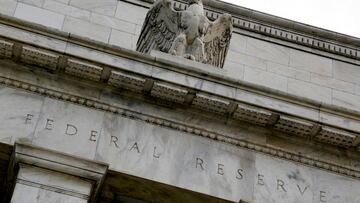Why aren’t high interest rates causing a recession in the US?
Interest rates remain high, yet the US economy continues to grow. Is the risk of recession going down?


Later this afternoon, the Federal Reserve will announce possible changes to interest rates, which remain at the highest levels in recent memory. The Fed controls the federal funds rate (FFR), a baseline rate tacked onto loans distributed to individuals and businesses. As the US central bank, the Fed is the lender of last resort, meaning that the central bank must set a monetary policy that reduces the risk of widespread default. The FFR reduces the risk that lenders create hazardous loans.
Tomorrow at 2:30 p.m. ET: Chair Powell hosts live #FOMC press conference: https://t.co/1uJrua5qsH pic.twitter.com/9K15OVlY4j
— Federal Reserve (@federalreserve) March 19, 2024
For example, in times of great economic uncertainty, like that experienced by the United States in the aftermath of the COVID-19 economic turmoil, the Fed increased rates. This was done, in part, to bring down inflation by raising the price of lending and thus slowing the transfer of money through the economy.
Whether or not an economy is in a recession is typically evaluated by GDP growth. If the figure is negative for two consecutive quarters, the economy will be in a recession. According to the US Bureau of Economic Analysis, which tracks this indicator found that in the last two quarters of 2023, real GDP grew 8.1 percent.
The U.S. economy grew at a 3.2% annualized rate in Q4, down slightly from the rate estimated a month ago.https://t.co/qHGf5n4FeX#GDP
— BEA News (@BEA_News) February 28, 2024
Monetary policy and the risk of recession
Monetary policy is one way to avoid a recession (or create one if it is excessively tight in an environment that cannot tolerate such high or low-interest rates). The Federal Reserve will announce any changes to monetary policy this afternoon.
Related stories
In early 2022, when inflation was surging, the FOMC began to impose rate hikes to cool the economy by increasing the cost of borrowing and thus slowing the movement of money. The Fed was concerned that high inflation could lead to an economic crisis if businesses could not keep up with costs and began to lay off workers. A rapid surge in unemployed workers could lead to decreased consumer spending, creating a vicious cycle where more workers are laid off, and aggregate demand would fall even further.
Some economists raised concerns that when the Fed began to increase interest rates, their actions would send the economy into a recession. Interestingly enough, increasing interest rates can also lead to increases in unemployment, leading to the same effect that the Fed was trying to avoid by raising rates to quell inflation. And, though recent GDP figures indicate that the economy is growing and not falling into a recession, even the Fed has warned that monetary policy has a lagging effect and the full extent of the impact that rate hikes have had may not be seen until the end of 2024 or early 2025. For that reason, the FOMC has been cautious when evaluating whether further rate increases are needed and, so far this year, has opted for more of a wait-and-see approach.
Complete your personal details to comment